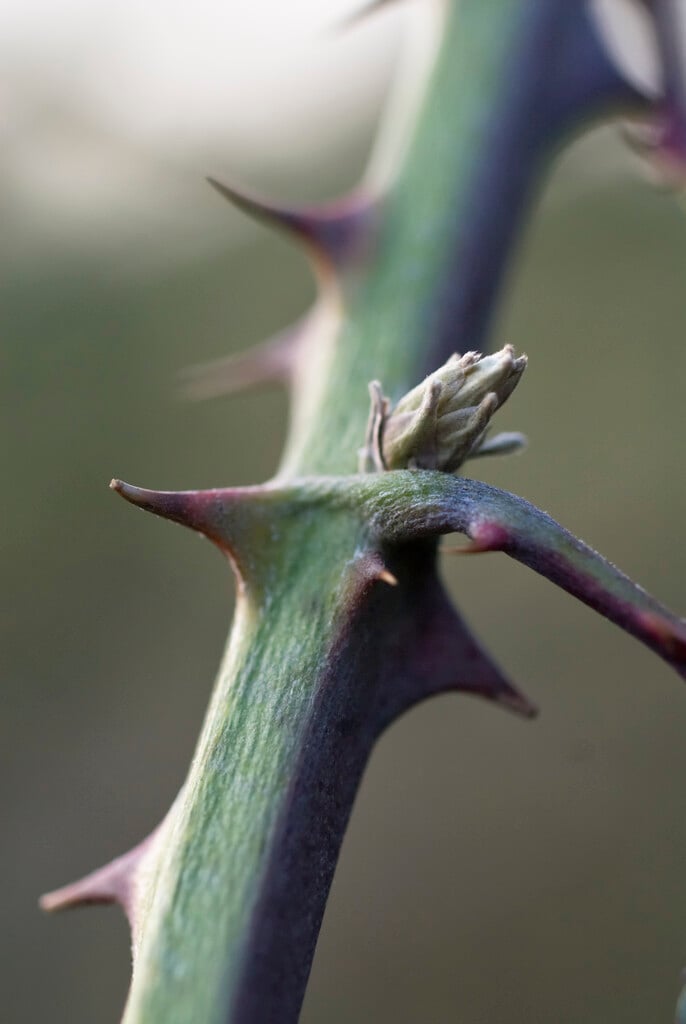Rubus ulmifolius
bramble
A vigorous, fast-growing shrub with arching, sometimes thorny stems to 2.5m long, and ovate, lightly toothed green leaves with white felting underneath. Produces clusters of rounded pink flowers in summer which are followed by small, dry fruits in autumn
Size
Ultimate height
1.5–2.5 metresTime to ultimate height
1–2 yearsUltimate spread
1.5–2.5 metresGrowing conditions
Moisture
Moist but well–drainedpH
Acid, Alkaline, NeutralColour & scent
| Stem | Flower | Foliage | Fruit | |
| Spring | Green White | |||
|---|---|---|---|---|
| Summer | Pink | Green White | ||
| Autumn | Green White | Black Red | ||
| Winter |
Position
- Full sun
- Partial shade
Aspect
East–facing or North–facing or South–facing or West–facing
Exposure
Exposed or Sheltered Hardiness
H6Botanical details
- Family
- Rosaceae
- Native to GB / Ireland
- Yes
- Foliage
- Deciduous
- Habit
- Spreading branched
- Genus
Rubus can be deciduous or evergreen shrubs, often scrambling with bristly or prickly stems bearing simple, lobed, palmate or pinnate leaves and 5-petalled flowers followed by juicy, sometimes edible fruits
- Name status
Correct
How to grow
Cultivation
Grows well in any soil in full sun or partial shade. The native species is often considered a weed; hybrid cultivars have been developed with more ornamental value and better fruit.
Propagation
Propagates by seed, and stem tips can root into soil to produce new plants
Suggested planting locations and garden types
- Wildlife gardens
Pruning
Hand pulling and digging out young seedlings can prevent dense clumps from developing
Pests
Generally pest-free
Diseases
May be susceptible to grey moulds
Get involved
The Royal Horticultural Society is the UK’s leading gardening charity. We aim to enrich everyone’s life through plants, and make the UK a greener and more beautiful place.
